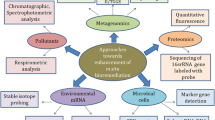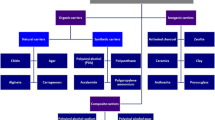Abstract
Ammonia-oxidizing archaeon (AOA) could play important roles for nitrogen removal in the bioreactors under conditions such as low pH and low dissolved oxygen. Therefore, enhancing ammonia oxidation capability of AOA has great significance for water and wastewater treatment, especially under conditions like low dissolved oxygen concentration. Utilizing a novel AOA strain SAT1, which was enriched from a wastewater treatment plant by our group, the effect of magnetic field on AOA’ s ammonia oxidation capability, its magnetotaxis and heredity were investigated in this study. Compared with control experiment, AOA’ s maximum nitrite-N formation rate during the cultivation increased by 56.8% (0.65 mgN/(L$d)) with 20 mT magnetic field. Also, it was testified that AOA possessed a certain magnetotaxis. However, results manifested that the enhancement of AOA’s ammonia oxidation capability was not heritable, that is, lost once the magnetic field was removed. Additionally, the possible mechanism of improving AOA’s ammonia oxidation capability by magnetic field was owing to the promotion of AOA single cells’ growth and fission, rather than the enhancement of their ammonia oxidation rates. The results shed light on the application of AOA and methods to enhance AOA’s ammonia oxidation capability, especially in wastewater treatment processes under certain conditions.

Similar content being viewed by others
References
Beman J M, Popp B N, Alford S E (2012). Quantification of ammonia oxidation rates and ammonia-oxidizing archaea and bacteria at high resolution in the Gulf of California and eastern tropical North Pacific Ocean. Limnology and Oceanography, 57(3): 711–726
Bernhard A E, Bollmann A (2010). Estuarine nitrifiers: New players, patterns and processes. Estuarine, Coastal and Shelf Science, 88(1): 1–11
Blohs M, Eichinger C, Mahnert A, Spang A, Dombrowski N, Krupovic M, Klingl A (2019). Archaea—An Introduction. In: Schmidt T M, ed. Encyclopedia of Microbiology (Fourth Edition). Oxford: Academic Press, 243–252
Chen C H, Liang H, Gao D W (2019). Community diversity and distribution of ammonia-oxidizing archaea in marsh wetlands in the black soil zone in North-east China. Frontiers of Environmental Science & Engineering, 13(4): 58
Ding K, Wen X H, Chen L, Huang D S, Fei F, Li Y Y (2014). Abundance and distribution of ammonia-oxidizing archaea in Tibetan and Yunnan plateau agricultural soils of China. Frontiers of Environmental Science & Engineering, 8(5): 693–702
Ding K, Wen X H, Li Y Y, Shen B, Zhang B (2015). Ammonia-oxidizing archaea versus bacteria in two soil aquifer treatment systems. Applied Microbiology and Biotechnology, 99(3): 1337–1347
Francis C A, Roberts K J, Beman J M, Santoro A E, Oakley B B (2005). Ubiquity and diversity of ammonia-oxidizing archaea in water columns and sediments of the ocean. Proceedings of the National Academy of Sciences of the United States of America, 102(41): 14683–14688
Gao J, Luo X, Wu G, Li T, Peng Y (2014). Abundance and diversity based on amoA genes of ammonia-oxidizing archaea and bacteria in ten wastewater treatment systems. Applied Microbiology and Biotechnology, 98(7): 3339–3354
He J Z, Shen J P, Zhang L M, Zhu Y G, Zheng Y M, Xu M G, Di H (2007). Quantitative analyses of the abundance and composition of ammonia-oxidizing bacteria and ammonia-oxidizing archaea of a Chinese upland red soil under long-term fertilization practices. Environmental Microbiology, 9(9): 2364–2374
Jia Z, Weng J, Lin X, Conrad R (2010). Microbial ecology of archaeal ammonia oxidation: A review. Acta microbiologica Sinica, 50(4): 431–437
Könneke M, Bernhard A E, de la Torre J R, Walker C B, Waterbury J B, Stahl D A (2005). Isolation of an autotrophic ammonia-oxidizing marine archaeon. Nature, 437(7058): 543–546
Lehtovirta-Morley L E, Ge C, Ross J, Yao H, Nicol G W, Prosser J I (2014). Characterisation of terrestrial acidophilic archaeal ammonia oxidisers and their inhibition and stimulation by organic compounds. FEMS Microbiology Ecology, 89(3): 542–552
Li Y, Ding K, Wen X, Zhang B, Shen B, Yang Y (2016). A novel ammonia-oxidizing archaeon from wastewater treatment plant: Its enrichment, physiological and genomic characteristics. Scientific Reports, 6(1): 23747
Liu J J, Wu W X, Ding Y, Shi D Z, Chen Y X (2010). Ammonia-oxidizing archaea and their important roles in nitrogen biogeochemical cycling: A review. Chinese Journal of Applied Ecology, 21(8): 2154–2160 (in Chinese)
Liu S, Yang F, Meng F, Chen H, Gong Z (2008). Enhanced anammox consortium activity for nitrogen removal: Impacts of static magnetic field. Journal of Biotechnology, 138(3–4): 96–102
Ma F, Wang Q, Zhu X, Shan J, Du C, Sun J (2010). Application status and development trend of magnetic technology in wastewater treatment. China Water & Wastewater, 26(14): 34–37 (in Chinese)
Niu C, Liang W, Ren H, Geng J, Ding L, Xu K (2014). Enhancement of activated sludge activity by 10–50 mT static magnetic field intensity at low temperature. Bioresource Technology, 159: 48–54
Park H D, Wells G F, Bae H, Criddle C S, Francis C A (2006). Occurrence of ammonia-oxidizing archaea in wastewater treatment plant bioreactors. Applied Microbiology and Biotechnology, 72(8): 5643–5647
Pitcher A, Rychlik N, Hopmans E C, Spieck E, Rijpstra W I C, Ossebaar J, Schouten S, Wagner M, Sinninghe Damsté J S (2010). Crenarchaeol dominates the membrane lipids of Candidatus Nitrososphaera gargensis, a thermophilic Group I.1b Archaeon. ISME Journal, 4(4): 542–552
Qin W, Amin S A, Martens-Habbena W, Walker C B, Urakawa H, Devol A H, Ingalls A E, Moffett J W, Armbrust E V, Stahl D A (2014). Marine ammonia-oxidizing archaeal isolates display obligate mixotrophy and wide ecotypic variation. Proceedings of the National Academy of Sciences of the United States of America, 111(34): 12504–12509
Rao T, Sonolikar R L, Saheb S P (1997). Influence of magnetic field on the performance of bubble columns and airlift bioreactor with submersed microorganisms. Chemical Engineering Science, 52(21–22): 4155–4160
Rosen A D (2003). Mechanism of action of moderate-intensity static magnetic fields on biological systems. Cell Biochemistry and Biophysics, 39(2): 163–174
Santoro A E, Dupont C L, Richter R A, Craig M T, Carini P, McIlvin M R, Yang Y, Orsi W D, Moran D M, Saito M A (2015). Genomic and proteomic characterization of “andidatus Nitrosopelagicus brevis”: An ammonia-oxidizing archaeon from the open ocean. Proceedings of the National Academy of Sciences of the United States of America, 112(4): 1173–1178
Sims A, Horton J, Gajaraj S, McIntosh S, Miles R J, Mueller R, Reed R, Hu Z (2012). Temporal and spatial distributions of ammonia-oxidizing archaea and bacteria and their ratio as an indicator of oligotrophic conditions in natural wetlands. Water Research, 46(13): 4121–4129
Spring S, Schleifer K H (1995). Diversity of magnetotactic bacteria. Systematic and Applied Microbiology, 18(2): 147–153
Tourna M, Freitag T E, Nicol G W, Prosser J I (2008). Growth, activity and temperature responses of ammonia-oxidizing archaea and bacteria in soil microcosms. Environmental Microbiology, 10(5): 1357–1364
Tourna M, Stieglmeier M, Spang A, Konneke M, Schintlmeister A, Urich T, Engel M, Schloter M, Wagner M, Richter A, Schleper C (2011). Nitrososphaera viennensis, an ammonia oxidizing archaeon from soil. Proceedings of the National Academy of Sciences of the United States of America, 108(20): 8420–8425
Yavuz Y, Celebi S S (2003). A typical application of magnetic field in wastewater treatment with fluidized bed biofilm reactor. Chemical Engineering Science, 190(5–8): 599–609
Zaidi N S, Sohaili J, Muda K, Sillanpaa M (2014). Magnetic field application and its potential in water and wastewater treatment systems. Separation and Purification Technology, 43(3): 206–240
Acknowledgements
This work was supported by the National Natural Science Foundation of China (Grant No. 51678335); the China Postdoctoral Science Foundation (No. 2015M57105).
Author information
Authors and Affiliations
Corresponding author
Additional information
Highlights
• AOA’s ammonia oxidizing capacity was enhanced under moderate magnetic field.
• AOA possessed a certain magnetotaxis under uneven magnetic field.
• Enhanced ammonia oxidizing capacity was lost once magnetic field was removed.
Rights and permissions
About this article
Cite this article
Tian, Z., Wang, B., Li, Y. et al. Enhancement on the ammonia oxidation capacity of ammonia-oxidizing archaeon originated from wastewater: Utilizing low-density static magnetic field. Front. Environ. Sci. Eng. 15, 81 (2021). https://doi.org/10.1007/s11783-020-1375-1
Received:
Revised:
Accepted:
Published:
DOI: https://doi.org/10.1007/s11783-020-1375-1




